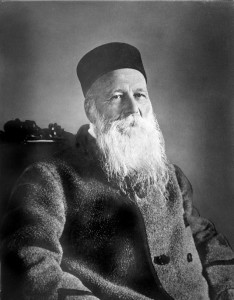WSJ historically Speaking: How the Original Geneva Convention Created Rules for War
If there is any comfort in this week’s publication of a Senate report on the Central Intelligence Agency’s post-9/11 treatment of terrorist suspects, it lies in the fact that torture and cruelty aren’t the common features of war that they once were. Unlike previous ages, the modern world has explicit standards of conduct, laid down by the Fourth Geneva Convention, to which almost 200 countries are now signatories.
The abuse of prisoners of war—whether for pleasure, to extract information or to demoralize the enemy—has been part of recorded history since at least the Assyrians in the first millennium B.C. In 875 B.C., King Ashurnasirpal II boasted, “Many captives…I burned with fire. From some I cut off their hands and their fingers, and from others I cut off their noses, their ears…of many I put out the eyes.”
The man behind the adoption of a universal moral code of warfare was the Swiss businessman Henri Dunant, the founder of the Red Cross. In the summer of 1864, spurred by the suffering he had witnessed after the Battle of Solferino (1859), Dunant brought together the representatives of more than a dozen governments. He invited them to become the first signatories of the original Geneva Convention. By December, 12 states had signed, including Italy, France, Sweden, Denmark and Spain. Britain followed in 1865, Russia in 1867, the U.S. in 1882.
Dunant’s altruistic campaign reflected the blossoming of an idea whose time had come. The term “altruism” had been coined only a few years earlier by the French mathematician and philosopher Auguste Comte (1798-1857). Derived from the Latin term “alteri” (meaning “of one another”), Comte defined altruism as acting on behalf of others without gain to oneself.
Of course, altruistic acts occurred long before Comte came up with the term. The Golden Rule—as in, “Love your neighbor as yourself” (Leviticus 19:18)—appears in some form in every religion going back to the ancient Egyptians. But until Comte, no one had isolated this particular human quality from other concepts such as generosity, charity or kindness.
For such a benign term, altruism became a surprisingly controversial notion. Comte believed in the pseudoscience of phrenology, invented by a German doctor named Franz Joseph Gall (1758-1828). The idea behind phrenology was that the shape and surface of the skull reflected the intelligence and characteristics of the brain within. Every quality, from musical appreciation to kindness, supposedly had a fixed location that could be pinpointed on the skull.
Comte, an avowed atheist, argued that altruism was one of the innate qualities identified by phrenology. He believed that it proved that people weren’t born in a state of sin; all humans had goodness within them from birth.
Comte’s claims were the object of serious debate. Scientists asked why humans were altruistic when rest of the natural world was “red in tooth and claw,” as Tennyson famously put it. In “The Descent of Man” (1871), Charles Darwin appeared to side with Comte, arguing that benevolence and cooperation were clearly natural to many species, not just humans.
But a century later, in “The Selfish Gene,” the evolutionary biologist Richard Dawkinscountered that the reverse is true: Actions that might look altruistic in human and animals are actually designed to disseminate genetic material. Self-interest, rather altruism, lies at the molecular heart of humanity.
Innate or not, selfless or selfish: Altruism—as defined by Auguste Comte’s writings and Henri Dunant’s actions—changed the moral landscape of war in the 19th century, and it can help preserve it in the 21st.

